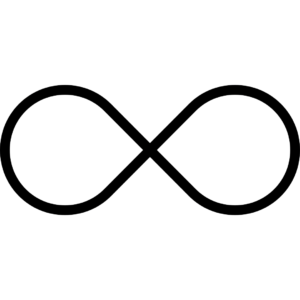
The Habit Loop: CUE-ROUTINE-REWARD
Ever seen this before?
It’s at the root of everything you do every day. Most are so ingrained in us that they go unnoticed and are like white noise in the background.
The idea of them becoming white noise is actually a good thing. That means they’re mostly happening on auto pilot. The issue becomes when the habit is not one that is helping us, maybe it’s even destructive.
Now we must stop the systems, interrupt the routine and change. This is where the hard work starts.
Learning to understand this process first and then working to change bad habits or form new habits will yield life changing results. This won’t just be for health as it can bleed into every single arena of your life.
Creating new habits or breaking existing ones involves understanding the habit loop—cue, routine, reward—and actively modifying one or more components to establish different behaviors. It requires consistent practice and repetition to solidify a new pattern of behavior or to overwrite an existing habit loop.
The Cue:
The cue is the trigger that initiates the habit loop. It can be a specific situation, time of day, emotional state, location, or even a particular person. Cues can be categorized into different types:
- Time: It could be a specific time of day, like getting hungry around noon.
- Location: For instance, feeling the urge to snack when passing by a particular store.
- Emotional State: Feeling stressed might trigger the habit of stress-eating.
- Routine: Another existing habit might act as a cue for a subsequent habit. For example, after brushing your teeth, you might feel the cue to floss.
Identifying and understanding these cues is pivotal in modifying or creating habits. By recognizing what triggers a habit, you can manipulate the cue to initiate a different routine or behavior.
For weight loss, recognizing cues that trigger unhealthy eating habits (like stress, boredom, specific times of day) and replacing them with healthier alternatives can be instrumental in forming new, beneficial habits.
The Routine:
In the habit loop model proposed by Charles Duhigg, the routine refers to the behavior or action that is triggered by the cue. It’s the actual habit or the sequence of actions that follow the cue. This routine is what defines the habit itself.
For example, in the habit loop of snacking due to stress or boredom:
Cue:
Feeling stressed or bored in the evening.
The Routine:
The routine, within the habit loop framework, represents the specific behavior or action that is triggered by the cue. It’s the habitual response or sequence of actions that follow the cue, forming the core of the habit itself.
Elements of the Habit Loop:
- Cue: The trigger or signal that prompts the habit. (See above)
- Routine: The behavior or action that follows the cue, forming the habitual pattern.
- Reward: The positive reinforcement or benefit gained from completing the routine, which reinforces the habit loop.
Example:
Let’s consider the habit loop of someone who feels stressed at work:
- Cue: Feeling stressed during work hours.
- Routine: The routine might involve taking a break and going for a smoke or consuming sugary snacks.
- Reward: The reward could be a temporary distraction or relief from stress.
Modifying the Routine:
To change or modify a habit, the focus often lies in altering the routine while maintaining the same cue and seeking a similar reward. For instance:
- New Routine: Instead of reaching for a cigarette or unhealthy snack, the individual could take a brief walk, practice deep breathing exercises, or have a healthy snack like fruit or nuts.
- Similar Reward: These alternative routines aim to provide a similar reward, such as stress relief or a break, while substituting the unhealthy behavior with a healthier one.
By understanding and modifying the routine within the habit loop, individuals can effectively adjust their behaviors, establish new habits, or break existing ones to align with their goals, whether it’s weight loss, stress management, or any other behavioral change.

The Reward:
After the routine is completed, there’s a reward that reinforces the habit loop. The reward might be the temporary relief from stress or boredom, the pleasure of eating, or the distraction from the original feeling.
Understanding this loop—cue, routine, reward—helps in modifying or replacing the routine to establish new, healthier habits. Changing the routine while maintaining the same cue and seeking a similar reward can lead to the development of healthier behaviors, like opting for a healthier snack or engaging in a different activity when experiencing stress or boredom.
The Reward:
In the habit loop model, the “reward” is the third component following the cue and routine. It’s the gratification or benefit that reinforces the habit loop, making it more likely that the behavior will be repeated when the cue arises.
Role of the Reward:
- Reinforcement: The reward is what reinforces the habit loop, signaling to your brain that the routine associated with the cue is beneficial or pleasurable.
- Satisfaction: It’s what satisfies a craving, fulfills a desire, or provides a sense of relief. This satisfaction solidifies the habit loop, making it more likely to repeat.
- Associative Learning: The reward is what teaches your brain that the specific routine is worth remembering and repeating when the cue is encountered again.
Example:
In the habit loop of evening snacking due to stress or boredom:
- Cue: Feeling stressed or bored in the evening.
- Routine: Going to the kitchen and eating high-calorie snacks.
- Reward: The reward here could be the temporary relief from stress, the pleasure of eating, or the distraction from the original feeling.
??Changing the Habit Loop:??
To modify this habit loop for weight loss or healthier habits, it’s essential to identify and understand the reward associated with the routine. Then, try to replace the routine with a healthier behavior that still provides a similar reward. For instance:
- Engaging in a calming activity like deep breathing or meditation to relieve stress.
- Having a small portion of a healthier snack to satisfy the desire to eat without consuming excessive calories.
By recognizing the reward and finding healthier ways to achieve it, it becomes possible to adjust the routine, creating a new, beneficial habit loop that supports your goals, whether it’s weight loss or any other behavioral change.
1. Consistency Over Intensity:
- Gradual Change: Forming habits focuses on making small, manageable changes consistently over time. This approach is more sustainable than sudden, drastic changes that are hard to maintain.
2. Behavioral Change:
- Automatic Actions: Habits become automatic behaviors, reducing the need for constant motivation or willpower. Once established, they’re performed almost unconsciously.
- Routine: Establishing a routine helps normalize healthier behaviors, making them feel more natural and effortless.
3. Mindset Shift:
- Lifestyle Change: It shifts the focus from short-term goals to long-term lifestyle changes, promoting a healthier relationship with food and exercise.
- Building Self-Efficacy: Success in forming habits boosts confidence and self-efficacy, making it easier to sustain healthy choices.
4. Environmental Cues:
- Contextual Triggers: Habits often form in response to cues in our environment. By shaping our environment consciously, we can make healthier choices the default option.
5. Brain Rewiring:
- Neuroplasticity: Over time, habits actually change neural pathways in the brain, making it easier to repeat those behaviors.
How to Use Habit Formation for Weight Loss:
- Start Small: Begin with achievable changes. For example, eating one extra serving of veggies daily or taking a short walk after meals.
- Be Consistent: Repetition is key. Aim to perform these actions daily to reinforce the habit.
- Track Progress: Use journals or apps to track habits. Seeing progress reinforces commitment.
- Focus on One Habit at a Time: Don’t overwhelm yourself with too many changes simultaneously.
- Modify Environment: Make healthier choices easier by adjusting your surroundings—keep healthy snacks easily accessible and remove tempting, unhealthy options.
- Accountability and Support: Engage with a supportive community or seek a buddy for mutual encouragement and accountability.
Remember, forming habits takes time, so be patient and compassionate with yourself throughout the process. Celebrate small victories, and don’t be discouraged by setbacks.

One sneaky yet very important area I think gets overlooked with habits is learning to know where you could get things wrong. Where could the barriers be that could trip you up? You want to know where those blind spots are so you’re not surprised when they show up. Otherwise you might feel blindfolded as you go through this habit journey.
You will increase the odds of your success over the rest who try to change their habits if you really pay attention to this next section..
Habit formation can be challenging for various reasons. Here are a few common struggles people might encounter:
- Lack of Consistency: Building habits requires consistency, which can be hard to maintain. Life often gets busy, and sticking to a routine might become difficult amidst changing schedules or priorities.
- Lack of Clarity: Sometimes, people set vague goals without a clear plan. For example, saying, “I want to exercise more” without specifying when, where, or how often can make it challenging to turn that desire into a habit.
- Overambitious Goals: Setting overly ambitious goals can be overwhelming. Trying to change too much too soon can lead to burnout or frustration, making it harder to maintain the habit.
- Lack of Motivation: Without a strong ‘why’ or motivation behind forming a habit, it’s easy to lose interest or give up when faced with obstacles or difficulties.
- Not Addressing Triggers or Cues: Habits are often triggered by cues or situations. If you don’t address the triggers or make changes to your environment to support the habit, it can be hard to establish and maintain it.
- Lack of Patience: Habit formation takes time, and people often get discouraged if they don’t see immediate results. This impatience can lead to abandoning the habit before it becomes ingrained.
- Resistance to Change: Sometimes, people struggle with habits because they are comfortable with their current routine or resistant to change, even if they recognize the benefits of a new habit.
Overcoming these struggles often involves setting specific, achievable goals, creating a supportive environment, staying motivated, and being patient with oneself throughout the process.
Knowing where you might trip up or why most people fail/struggle with habits is just as important as knowing the details of the habit loop.
Learn it, study it and then realize you will need patience and consistency to execute your big transformation. Whether it is 5lbs, 100lbs, lifting heavier, exercising more etc.etc. The analogy it’s a marathon not a sprint hits different.
Set yourself up for success and learn from people who have failed. Hire a coach, join a group that naturally does the behaviors you’re wanting to learn/master.
Your coach,
- Matt






